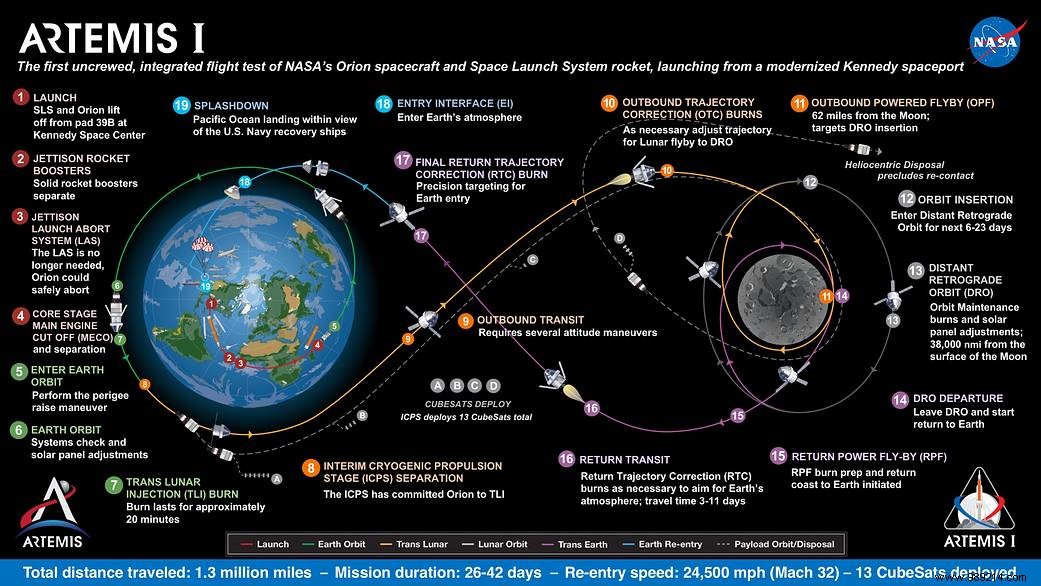NASA's first Artemis lunar mission will have to wait a while longer. According to the agency, its launch will finally take place in April at the earliest. Engineers need more time to perform security checks.
NASA is very meticulous in nature. Indeed, since the past disappointments, nothing is now left to chance, especially when it comes to eventually returning humans to the Moon. The launch of Artemis I, the first part of this incredible ambition, wasinitially scheduled for the end of 2021 , before being pushed back twice. Finally, this launch will take place in April at the earliest for technical reasons .
"Teams are taking operations step by step to ensure the integrated system is ready to safely launch the Artemis I mission. NASA is reviewing opportunities launch in April and May “, said the agency in a press release. Specifically, a first launch window will be proposed from April 8 to 23 . In the event of a new postponement, a second window will be available from May 7 to May 21 .
This Wednesday, February 2, we also learned that the SLS launcher above which the Orion capsule is capped will not be deployed on Kennedy Space Center's "Launch Pad 39B". before mid-March. Once this maneuver has been successfully completed, the next step towards launch will be a wet dress rehearsal . As part of this procedure, the mission team will simulate every stage of the launch (except the launch itself, of course), including the refueling of the rocket.
As a reminder, Artemis 1 will be an unmanned mission around the Moon. The Orion capsule (supposed to carry astronauts later) will be propelled into space by the Space Launch System (SLS) launch vehicle. During his journey, which should last about 26 days , the spacecraft will make an Earth-Moon round trip following a trajectory similar to that of the Apollo 8 mission.

The main objective of this first part will be to validate the operation of the new heavy launcher of the American agency, which should fly for at least ten years. The capsule will also be tested during the different phases operated around the Moon. Inside the cabin, the researchers will also install an instrument (MARE experiment) aimed at measuring the level of radiation exposure of the crew outside the regions protected by the Earth's magnetosphere.
If successful, NASA will be able to follow up with the Artemis 2 and Artemis 3 missions. The first will be a manned mission in orbit around the Moon, while the second will carry out humans to land on the lunar surface for the first time since 1972.